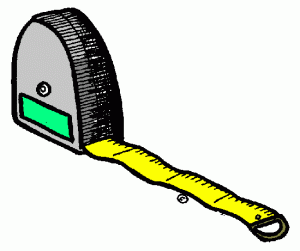 There are two major points of negotiations when you are buying or selling a house. The first happens when the offer is made. At this point things like price, closing date, disclosure of financing, and other items are worked out. The second happens about a week later when the buyer has completed any home inspections they wanted and are asking for repairs.
There are two major points of negotiations when you are buying or selling a house. The first happens when the offer is made. At this point things like price, closing date, disclosure of financing, and other items are worked out. The second happens about a week later when the buyer has completed any home inspections they wanted and are asking for repairs.
The preferred method by most buyers and sellers is to agree upon a monetary credit at closing from the seller to the buyer for the buyer to do the repairs themselves after closing. This is preferred because it’s super easy for the seller, and for the buyer they then have control over the quality of the work. However, banks don’t like to see money credited to do repairs after closing. What if the buyer never does the repair? So the method to create the credit is to have the credit be applied to the buyer’s closing costs. This allows the repair issue to stay out of the transaction and accomplishes the exact same thing as it leaves money in the buyer’s possession that they otherwise would have spent in the purchase. The buyer can then do whatever they want to with that money after closing. This then creates the limitation that the amount of the credit can not exceed the buyer’s closing costs. So what if the seller has already agreed to pay the buyer’s closing costs? If this is the case, or if the buyer just simply won’t take a credit for the repairs, then the seller is left with the responsibility to do the repairs before closing.
Now comes the part that most buyers and sellers are not aware of. Any repair done in the sale of a home must be done by a licensed and bonded contractor. The seller can not do the repairs themselves. This law went into effect several years ago and applies to all real estate transactions throughout the state of Oregon. The reason makes sense when you think about it. Work done by a properly licensed contractor comes with an automatic 1-year warranty. And the bond that contractors are required to carry guarantees money is available to repair shoddy work if a problem develops and the contractor does not correct it. So buyers, sellers, and Realtors are all protected by using licensed contractors. I can, however, see that this law can become impractical if the work is super minor like replacing a cracked light switch cover, or re-nailing a fence board. I think it makes sense, in light of this law, that these sorts of minor repairs really must be done as normal maintenance on a home long before it is listed for sale. Taking good care of your home while owning it will also get you a higher price when the time comes to sell it.
This law also applies to rental properties. So if you are a landlord, you are not supposed to do the work on your rentals unless you have a contractor’s license.
The home inspection contingency is written in our standardized forms to be an easy out for the buyer. A buyer does not even have to give a reason for disapproving of the property as a result of the home inspection. They can “unconditionally” disapprove. And that’s it. The deal is dead and the buyer gets their earnest money back. So for sellers it’s a pretty anxious time. They know the buyer can back out of the purchase and they also know that they can be asked to do repairs or pay for closing costs. It’s important that this part of the sale be handled properly so that buyers buy a solid home and also so that repairs are done correctly.
Not a very seasonal topic, I know. But important. And probably another good reason to use a Realtor when you buy or sell a house.
Cheers!
Dianne










